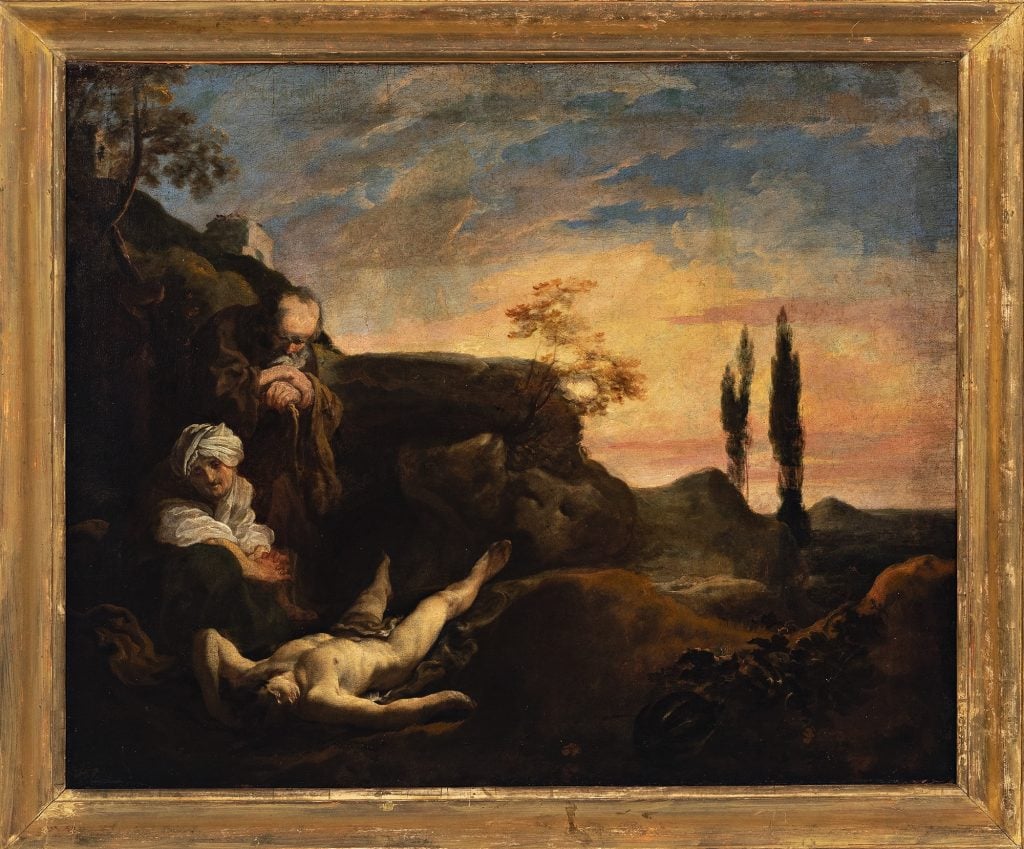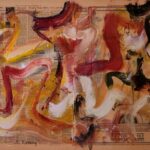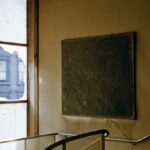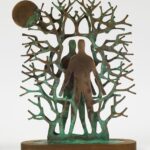Johann Liss, Adam and Eve Mourning Abel (1624-29)
Gallerie dell’Accademia, Venice
Selected by curator Michele Nicolaci
Johann Liss was in Germany for the first few years on his life, then he travelled a lot in Amsterdam, Paris, Rome, and Venice. He had a very international career until he died young, in 1631, because of the plague. This is a man who studied a lot of the previous painters in Venice, such as Veronese and Titian, but he also had the chance to update his style, inspired by the works of Caravaggio and Caravaggesque painters in Rome.
It’s a historical, biblical kind of narrative painting but it can also be considered a landscape painting. It’s this perfect balance between the story of Adam and Eve and their sons, Cain and Abel, but also this typical Venetian landscape with this wonderful balancing between warm and cold hues. The color of the sunset feels really impressionistic, long before the 19th century.
People are attracted to the landscape at first, and then when they see the label, they are interested to hear why Adam and Eve are so old. This is the couple after the Garden of Eden, as normal people who experience the struggles of work and suffering. At the end of their lives, they experience the most unbelievable sorrow when one son is killed by the other. Painting Adam and Eve in their later years is not so typical within the Italian tradition. This is definitely more common in the northern tradition, so Liss would have been familiar with some other examples.
Only a northern European painter would indulge so much in the wrinkles of the faces and clothes. It’s really dramatic. In this small canvas, you have this interesting comparison between the northern approach to the faces of Adam and Eve, and quoting the classical convention, with Abel’s naked body lying down, in the model of a famous painting by the Flemish painter Michael Coxcie, which is now in the Prado, Madrid. Cain is in the painting, running away, but you can’t see him very clearly.
The trees are really interesting symbols; the small oak is struggling to survive without enough ground, and the two poplars are being moved in the wind. The poplars are connected with the mourning over Abel, because the sound of the leaves is reminiscent of the sounds of people grieving, according to Quintiliano and classical tradition. It’s a landscape painting but it is crowded with symbols.
Follow Artnet News on Facebook:
References: this article is based on content originally published by Emily Steer on Artnet. You can read the full article here.






